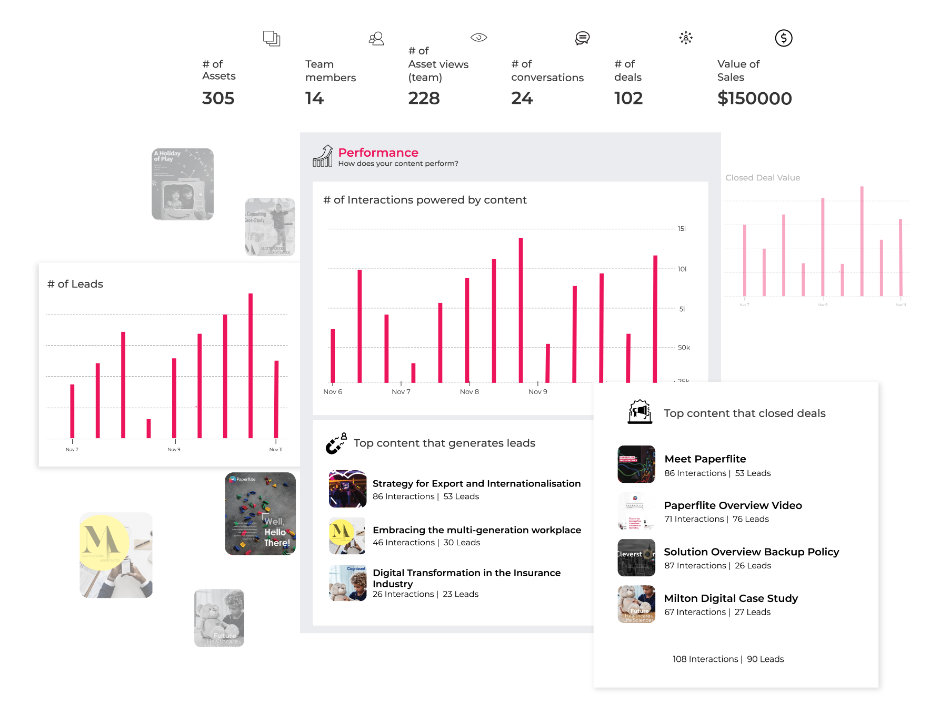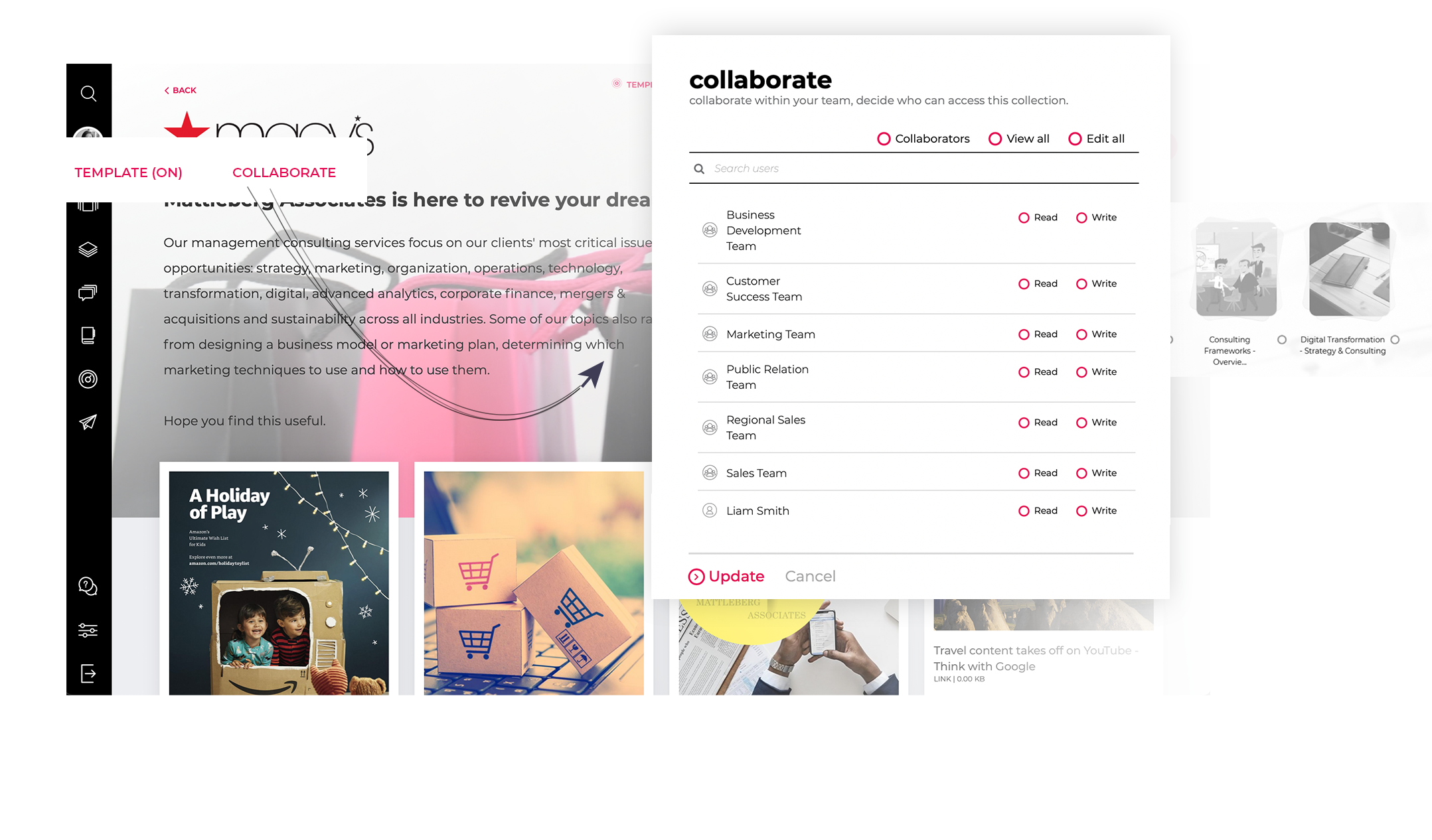What Revenue Enablement Can Do for Your Business
Revenue enablement empowers your sales team to close more deals and increase revenue through effective training and strategic alignment.
In today's fast-paced and highly competitive business environment, companies need to be agile and adaptable to succeed. One way to achieve this is through Revenue Enablement, a strategy that aligns marketing and sales efforts to drive revenue growth.
In this article, we will explore the definition of Revenue Enablement, its importance in modern business, the benefits it offers, the key elements that make it successful, how to implement it in your organization, best practices to follow, challenges and solutions, and the future of Revenue Enablement.
What is Revenue Enablement?
Revenue Enablement is the strategic alignment of marketing and sales efforts with the goal of driving revenue growth. It is a holistic approach that goes beyond just sales enablement, which focuses solely on sales team enablement.
Revenue Enablement encompasses the entire customer journey, from initial awareness to post-sale engagement. It involves collaboration between marketing, sales, and other departments to create a seamless customer experience and drive revenue growth.
The Importance of Revenue Enablement in Modern Business
Revenue Enablement is crucial for modern businesses because it helps companies achieve their revenue goals by aligning marketing and sales efforts.
In a world where customers have access to a wealth of information and have high expectations, Revenue Enablement enables companies to provide a personalized and relevant experience that meets customer needs. It also helps businesses stay competitive by streamlining sales processes and shortening sales cycles.
The Benefits of Revenue Enablement
Improved Collaboration Between Marketing and Sales Teams:
Revenue Enablement fosters collaboration between marketing and sales teams, which helps to create a cohesive customer journey. It ensures that both teams are working towards the same goals and have a deep understanding of each other's roles and responsibilities.
Increased Revenue Growth:
Revenue Enablement helps companies increase revenue growth by optimizing the entire customer journey, from initial awareness to post-sale engagement. By providing a personalized and relevant experience that meets customer needs, companies can increase customer loyalty and drive revenue growth.
Enhanced Customer Experience:
Revenue Enablement helps companies provide a seamless customer experience by aligning marketing and sales efforts. By providing relevant and personalized content at every stage of the customer journey, companies can create a positive customer experience that increases customer loyalty.
Streamlined Sales Processes and Faster Sales Cycles:
Revenue Enablement helps companies streamline sales processes and shorten sales cycles by providing sales teams with the tools and content they need to close deals. By providing the right information at the right time, companies can reduce the time it takes to close deals and increase revenue growth.
The Key Elements of Revenue Enablement
Content Creation and Management
Content creation and management is a key element of Revenue Enablement. It involves creating content that is relevant and personalized for each stage of the customer journey. It also involves managing content to ensure that it is easily accessible for sales teams.
Make Content That Is Bingeable And Not Boring
Sales Training and Coaching
Sales training and coaching is another important element of Revenue Enablement. It involves providing sales teams with the knowledge and skills they need to be successful. It also involves ongoing coaching and support to ensure that sales teams are continuously improving.
Sales Tools and Technology
Sales tools and technology are essential for Revenue Enablement. They include tools for lead generation, sales automation, and analytics. They also include technology for managing customer relationships and tracking sales performance.
Analytics and Performance Metrics
Analytics and performance metrics are crucial for measuring the success of Revenue Enablement. They help companies track revenue enablement KPI's such as revenue growth, customer engagement, and sales team performance.

How to Implement Revenue Enablement in Your Organization
Implementing a revenue enablement program can be a challenging task, but with the right approach, it can drive significant improvements in your business's revenue growth and customer experience. Here are some steps you can follow to implement a revenue enablement program in your organization:
Identify your revenue goals and objectives:
The first step is to identify your revenue goals and objectives. This will help you determine what specific areas you need to focus on in your revenue enablement program.
Assess your current sales processes and capabilities:
The next step is to assess your current sales processes and capabilities. This will help you identify areas of improvement and determine where to focus your efforts.
Develop a Revenue Enablement strategy:
Based on your goals, objectives, and current sales processes, you can develop a revenue enablement strategy that addresses the specific needs of your organization.
Implement and measure the effectiveness of your Revenue Enablement program:
Once you have developed your strategy, you can start implementing your revenue enablement program. It's essential to measure the effectiveness of your program regularly and make adjustments as needed to ensure that it's delivering the expected results.
Best Practices for Revenue Enablement
To make the most of your revenue enablement program, here are some best practices to consider:
Involve stakeholders from different departments: Revenue enablement is a cross-functional effort that involves sales, marketing, and customer success teams. It's essential to involve stakeholders from different departments to ensure that everyone is aligned and working towards the same goals.
Focus on the customer and their needs: Revenue enablement is about improving the customer experience, so it's essential to keep the customer at the center of your efforts. Make sure that all your sales and marketing activities are focused on addressing the customer's needs and pain points.
Use data and analytics to inform decisions: Data is critical to measuring the effectiveness of your revenue enablement program. Use analytics to track metrics such as revenue growth, sales cycle time, and win rates, and use the insights to make data-driven decisions.
Get Actionable Insights That Moves Sales Forward
Continuously evaluate and adjust your Revenue Enablement program: Revenue enablement is not a one-time effort but an ongoing process. Continuously evaluate the effectiveness of your program and make adjustments as needed to ensure that it's delivering the expected results.
Challenges and Solutions in Revenue Enablement
Implementing a revenue enablement program is not without its challenges. Here are some common challenges and solutions to consider:
Resistance to change from sales and marketing teams: One of the biggest challenges in revenue enablement is resistance to change from sales and marketing teams. To overcome this, involve stakeholders from different departments early on and communicate the benefits of the program clearly.
Lack of alignment between sales and marketing teams: Another challenge is a lack of alignment between sales and marketing teams. To address this, create a shared understanding of the customer journey and ensure that both teams are working towards the same goals.
Difficulty in measuring the impact of Revenue Enablement: Measuring the impact of revenue enablement can be challenging, especially if you're working with a complex sales cycle. To address this, use data and analytics to track key metrics and use customer feedback to understand the impact of your program.
How to overcome these challenges and succeed in Revenue Enablement:
To overcome these challenges and succeed in revenue enablement, it's essential to involve stakeholders from different departments, focus on the customer, use data and analytics to inform decisions, and continuously evaluate and adjust your program.
The Future of Revenue Enablement
Revenue enablement is an ever-evolving concept, and its future is promising. With advancements in technology and changing customer behavior, revenue enablement is expected to play an increasingly important role in modern business. Here are some emerging trends and technologies in revenue enablement that businesses should keep an eye on:
Artificial intelligence and machine learning: AI and machine learning are already being used to analyze sales data and provide insights into buyer behavior. In the future, these technologies could be used to personalize sales pitches, automate lead scoring, and even provide predictive analytics.
Virtual and augmented reality: Virtual and augmented reality could be used to enhance the customer experience by allowing buyers to visualize products and services in a more immersive way. This technology could also be used to train sales teams and provide interactive product demos.
Sales automation: As sales processes become more complex, automation will become increasingly important. Sales automation tools can help streamline workflows, automate tedious tasks, and provide sales teams with more time to focus on selling.
Predictive analytics: Predictive analytics can help businesses identify potential customers and predict which products or services they are likely to buy. By using predictive analytics, sales teams can focus their efforts on the most promising leads and increase their chances of closing deals.
Mobile sales enablement: With more and more people using their smartphones and tablets to research and purchase products, mobile sales enablement is becoming increasingly important. Sales teams need to be able to access and share information on the go, and mobile sales enablement tools can help facilitate this.
The impact of Revenue Enablement on the sales profession
As revenue enablement continues to grow in importance, it is likely to have a significant impact on the sales profession. Here are some ways in which revenue enablement could change the sales profession:
Increased collaboration: Revenue enablement requires collaboration between sales, marketing, and other departments. As a result, sales teams will need to become more comfortable working with others and sharing information.

Greater use of technology: As technology becomes more advanced, sales teams will need to become more proficient in using it. This could include everything from CRM systems and sales automation tools to virtual and augmented reality.
Focus on the customer: Revenue enablement places a strong emphasis on understanding the customer and their needs. Sales teams will need to become more adept at understanding buyer behavior and providing personalized solutions.
Leverage Intelligence On Every Stage of your Content Journey
Conclusion
In conclusion, revenue enablement is a powerful strategy for businesses looking to improve collaboration, increase revenue growth, enhance the customer experience, and streamline sales processes.
By leveraging Paperflite's key features such as content creation, sales training, sales tools, and analytics, businesses can develop effective revenue enablement programs that drive results.
With Paperflite, sales teams can easily access and use the most up-to-date content, and track analytics to measure the effectiveness of their efforts.
Make Your Content Available Anywhere, Anytime, Any Device
Implementing revenue enablement requires careful planning and execution, but the benefits can be significant.
By involving stakeholders from different departments, focusing on the customer, using data and analytics to inform decisions, and continuously evaluating and adjusting the program, businesses can overcome common challenges and succeed in revenue enablement.
As revenue enablement continues to evolve, businesses will need to stay up-to-date with emerging trends and technologies in order to stay ahead of the competition.
By embracing new technologies such as AI and machine learning, virtual and augmented reality, and sales automation, businesses can continue to improve the effectiveness of their revenue enablement programs and drive long-term growth.
